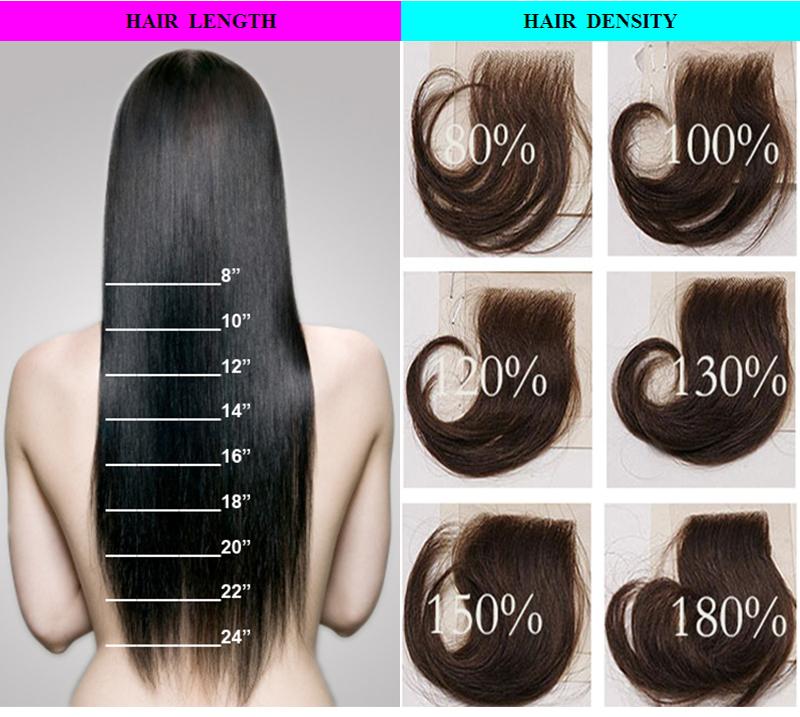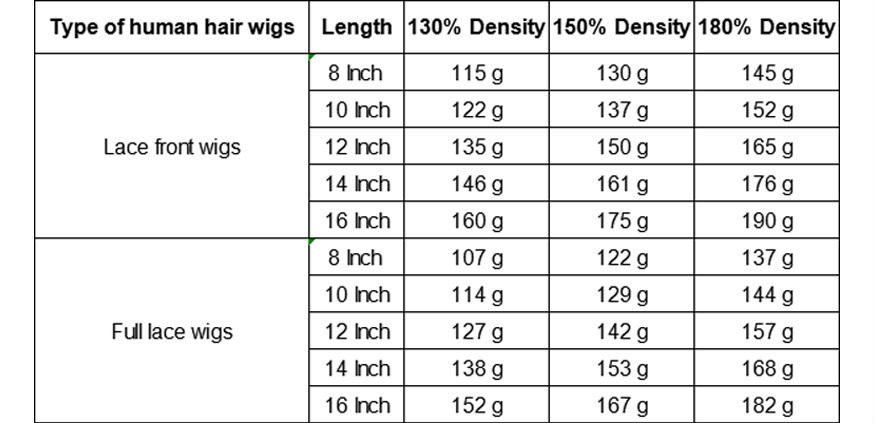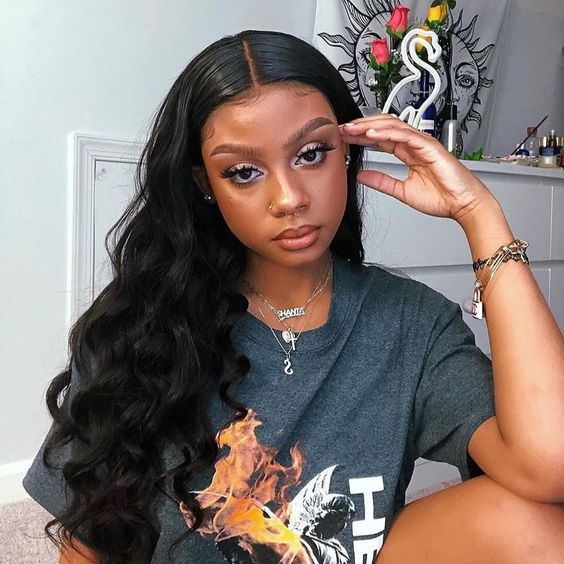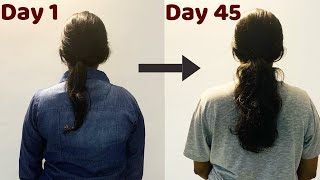Hair Density: What It Is And How Does It Matter?
- Posted on 05 November, 2021
- Hair Knowledge
- By Anonymous
When we talk about hair, we generally categorize it as thick or thin, or long. We also look at its texture. But, another metric that should be taken into account is hair density.
Many people are usually concerned about this question: what is hair density, and does it matter? Well, the hair density matters a lot. That’s because hair not only completes one’s physical looks but it also boosts one’s confidence.
When compared with curly hair, wavy hair, and straight hair. There still will be a difference in the volume even though they have the same density. At least in the eye of the viewer. This is especially true when you comb the hair out.
HAIRURL mall offers 130%, 150%, and 180% density wig. There is also 100%, 120%, and 200% density in the market, even a 250% density wig. So you need to learn how to tell the real density. Because of some 250% density wigs just like our 180% density wig. Here is some reference for you.
What you will learn from this article:
1.Why is important to know your hair density?
2.What is hair density?
3.How to determine your hair density?
4.What's the best hair density?
1.Why is important to know your hair density?
Knowing your hair density is important as it can help you choose the best style that suits you. It can also help assist you to choose the right products for your hair. Additionally, knowing your hair density matters as it can help you select the necessary measures to care for your hair.
Hair density is one factor that determines how to best style your hair. It is essential to know the density well, as it not only determines the styles you could try but also decide which products would fit you the most.

Only when the density of the hairpiece matches the density of your real hair could your overall hairdo look natural. If they do not match, then it would be easy for others to detect.
The density also affects the base design of a hair system. For example, if you want to have heavy-looking hair, then you couldn’t opt for the Swiss or HD lace wigs. These materials can’t bear such a heavyweight. In contrast, if you want to have light hair only, then we could advise you to go for a transparent lace or other base materials to make your hair look the most ultra-realistic. Hence, kindly specify your requests carefully when ordering, and our staff will consult you with the most suitable way out.
2.So, what is hair density?
In simple terms, hair density is the number of individual strands per square inch on the scalp. The average person has about 2,200 strands of hair per square inch on their head. At the same time, on average, people lose between 50-100 hairs per day.
While hair thickness or thinness refers to the circumference of each strand, hair density, on the other hand, refers to how thick or thin the collective group of hairs is. That means an individual can have very thin hair but very dense at the same time, or they can have thick, but low-density hair.
Below are pictures of the different density levels that you can choose for your full lace wig. Density is defined as how thick or thin you want your hair to be. The standard density is 130% which is Medium Density. If you do not like your hair to be too thick we suggest starting out with Light to Medium Density.

50% = Extra Light Density
80% = Light Density
100% = Light to Medium Density
130% = Medium Density
150% = Medium to Heavy Density
180% = Heavy Density
Generally, high-density, thick strands can use products more often, and it takes well to thick creams and butter. Low-density, fine strands, on the other hand, do not require nearly as much product, so it responds best to lighter products such as lotions and creams. Low-density hair is often weighed down easily and become lifeless when too heavy or too much product is applied.
3.How Do You Measure Hair Density?
Strand Count
Believe it or not, there are not that many ways to measure the density of your hair.
The most tedious of them is the strand test. This method is the counting of each piece of hair. All you have to do is part your hair into a 1-inch square section and count the strands that way. This procedure will have to be done numerous times until every strand has identified.
This method can take forever, but it is said to be the most effective.
There is a much easier way to measure your hair density. To do that, tie your hair back and measure the circumference of your tail. If it is less than two inches, then that means you have low-density hair. If it is 2-3 inches, then you have medium-density hair, and if it is four inches and above, then you have high-density hair.
For men who have short hair or ladies with short bob who can’t pull back their hair into a ponytail, just take a closer look at your scalp.
If you can easily see your scalp without moving your hair around, then you have low-density hair. If your scalp is somehow visible from the top of your head, it means you have medium-density hair.
And if you can see your scalp, that means you have high-density hair. Remember that you can only measure the density of your hair when your hair is dry and not wet. That’s because wet hair generally looks thinner than it really is.
You are more than welcomed to try this method on your own. However, I recommend that you see a professional hairstylist.
A hairstylist can gauge your hair density the best because they can conduct the strand count more effectively.
4.What's the best hair density?

When it comes to the best density, there really isn’t one that’s better than another. It comes down to the look you’re trying to achieve.
The standard percentage and most popular choice is 120% which is considered Natural/Medium Density. The average healthy human head of hair is considered to be between 100% - 150%.
If you are looking for natural human hair wigs to add your beauty, HAIRURL offers various textures such as body wave, straight, curly, kinky curly, and other type wigs, there are 130% density, 150% density, and 180% density wigs you can choose.
Haircare Tips for different densities
Different hair densities require different care. For instance, if you have low-density hair, you should use light products that will not weigh it down and reduce its volume. Use a mousse to make your thin hair look voluminous. You may also consider using volumizing shampoos, dry shampoos, and volumizing conditioners with thickening agents.
For medium-density hair, you can use a wide variety of products and styles to enhance its texture. You can try mousse and dry shampoo to give it more volume. You can also use heavier creams and butter to give your hair more weight and hang. You can also try other styles such as braids and twists to alter the curl pattern and give your hair more structure.
For high-density hair, you can use products with heavier hold such as a cream, gel, or a styling butter, especially if you have curly and dense hair. Of course, this will help hold your hair strands and minimize puffiness. Layered hairstyles work perfectly for high-density hair.
High-density hair also tends to feel heavy. So, if you feel like they are a bit heavy for you, you can ask your hairstylist to remove some excess weight. Avoid blunt ends as they can create that pyramid effect. So, if you are going to remove some weight, ensure that your hairstylist carefully thins out the ends.
What should I do if I have low-density hair?
For medium-density hair, you can use a variety of human hair bundles or wigs to enhance your natural texture. For example, try a body wave or curly wig, or other wavy wigs to add volume to your hair.


